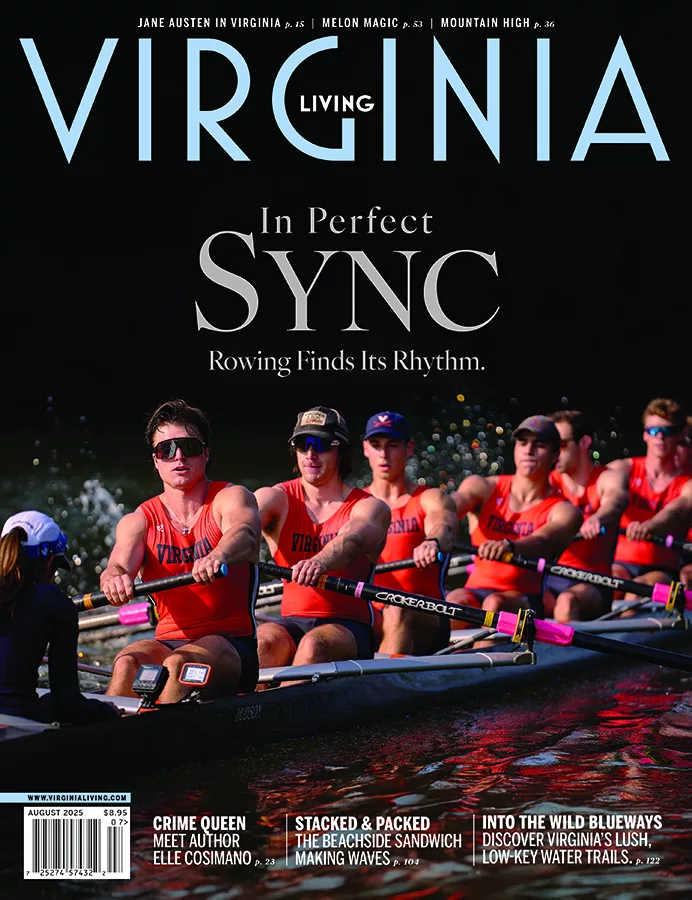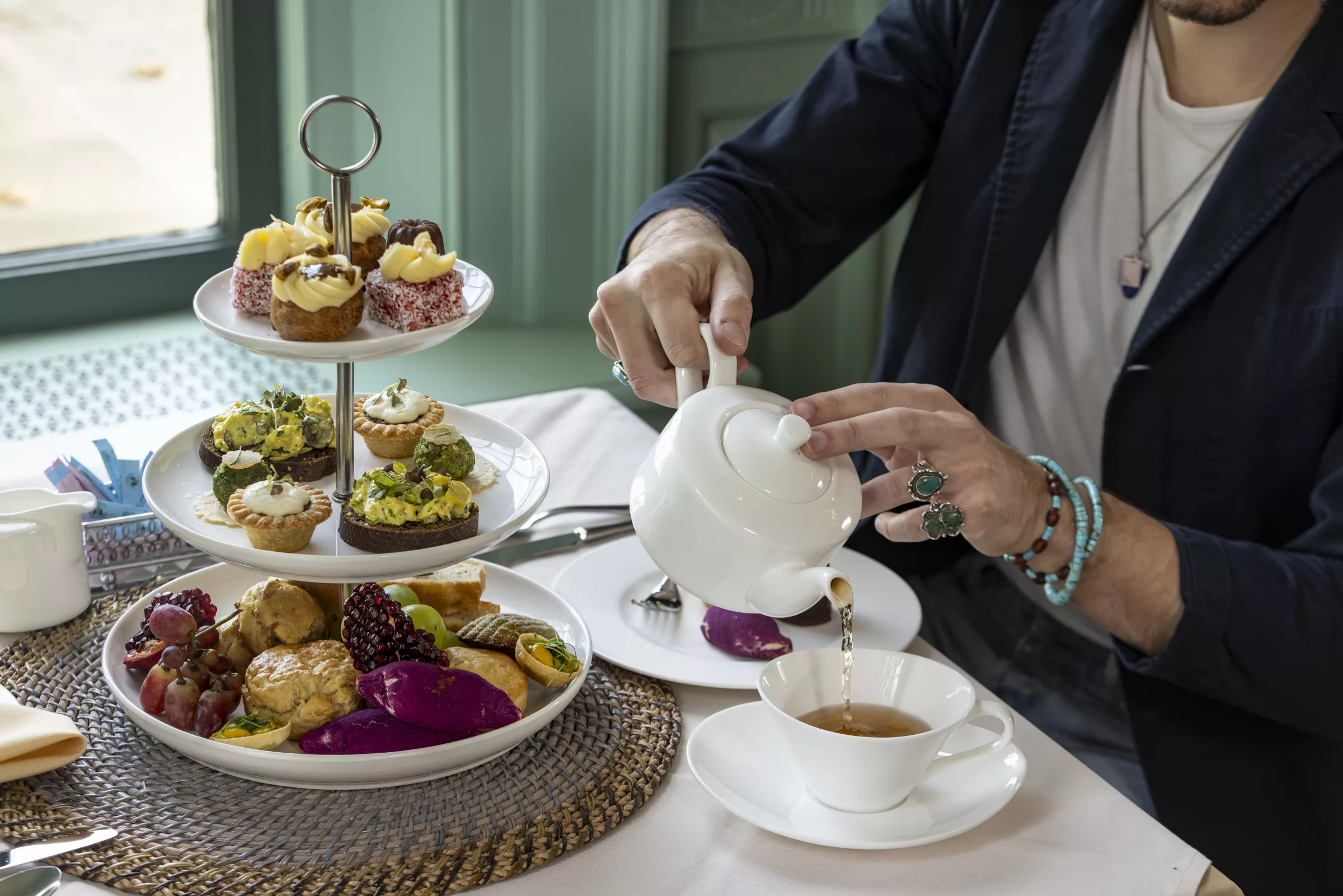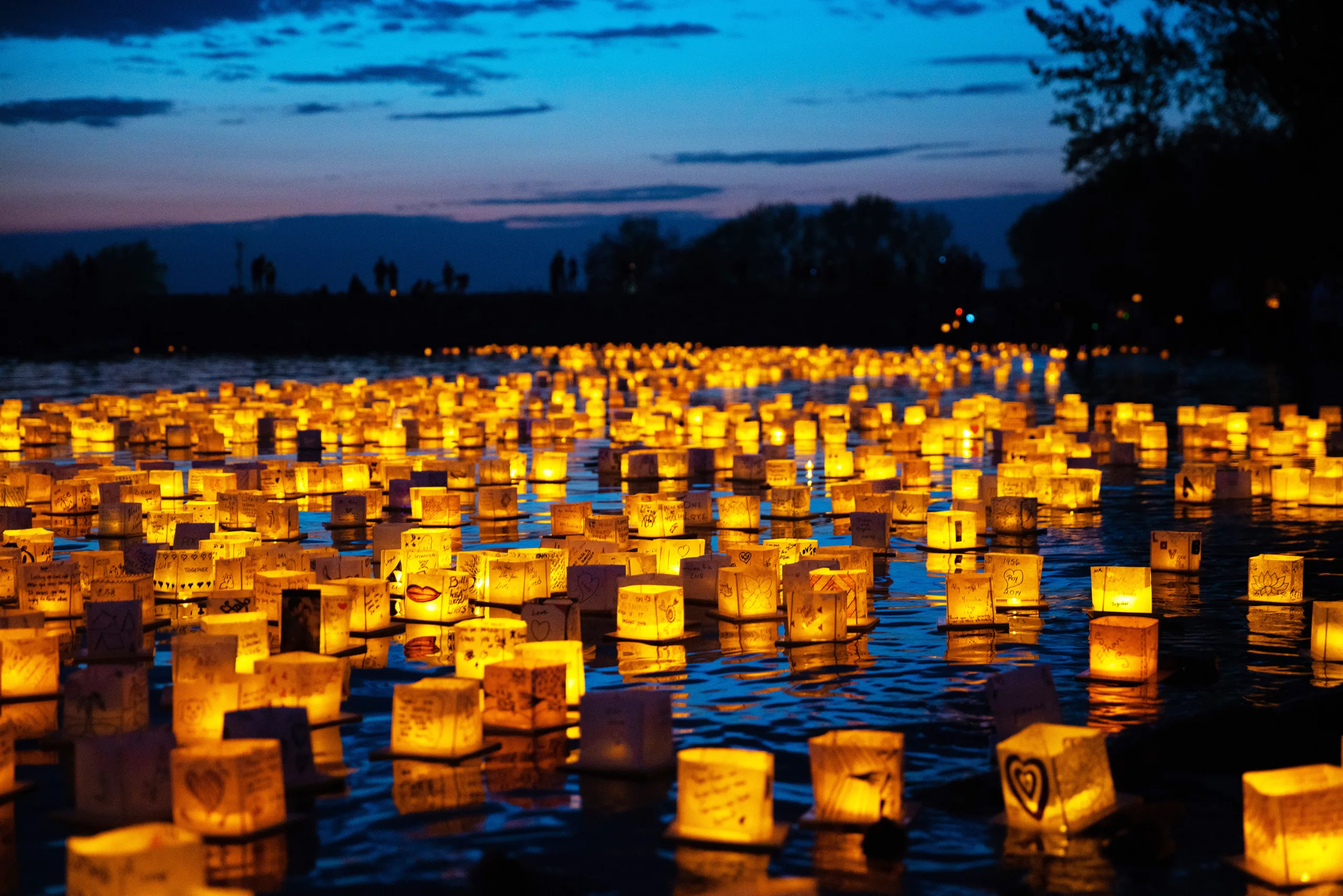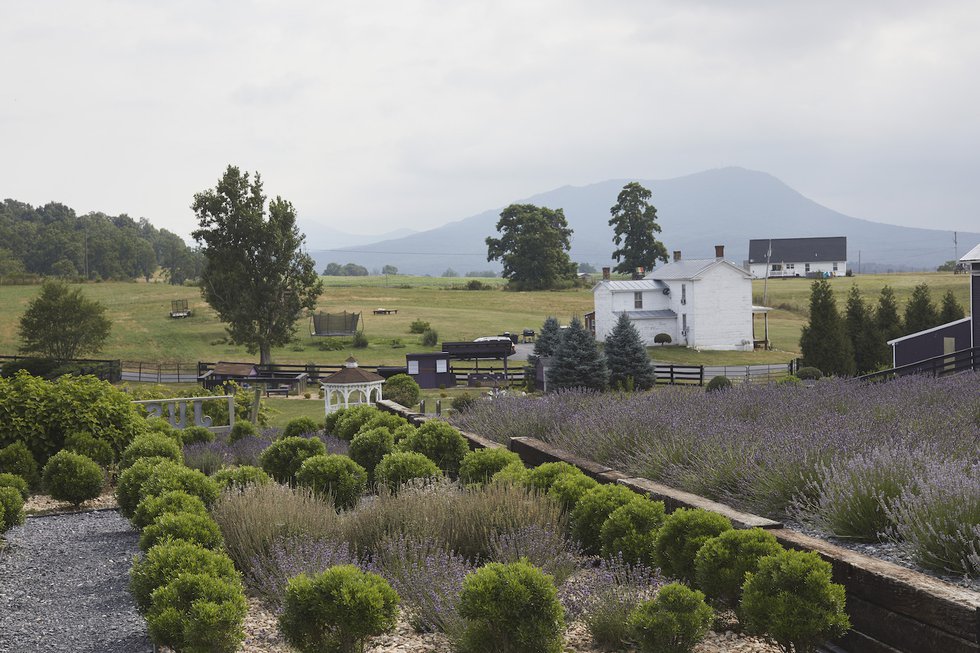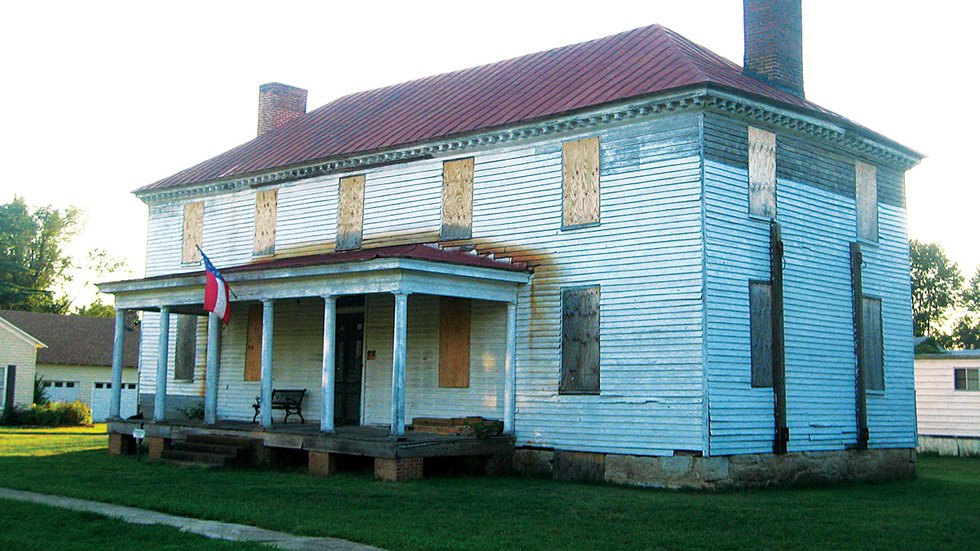The village, founded in 1733, thrives with modern life—and they throw a great party every fall.

Waterford, VA
Linda Landreth and her sheep
(Photos by Scott Suchman)
It’s morning in the tiny village of Waterford, an hour from bustling Washington, D.C., and Linda Landreth pauses to check on her sheep before rattling open the weathered door of Waterford Market, built in 1883. Landreth pokes some wood into the cast iron stove and readies her spinning wheel. She’ll spend her day turning sacks of wool into skeins of yarn as her customers shop for the knitted goods, lamb products, and groceries that line her shelves. She’s been doing this for more than 40 years.

Waterford, VA
A home on Second Street
Welcome to modern-day Waterford, a cherished Loudoun county community that has eluded the bulldozers that erased so much of Loudoun’s beauty. The village—don’t call it a town, locals insist—hasn’t changed much since 1733 when Quaker families migrated here from Bucks County, Pennsylvania, and built a mill on the bank of Catoctin Creek, turning Waterford into one of the most prosperous villages in the county.
Of the 97 homes here, more than half were built before 1861. Only four were built after 1922. “If you squint to blur out the power lines and traffic signs,” says Landreth, “you get a view of what these streets looked like back then.”
Waterford was designated a National Historic Landmark in 1970, an honor shared with Mount Vernon and Monticello. Living here requires forfeiting modern amenities like level sidewalks and convenient shopping and parking. But it’s a lifestyle that the residents heartily embrace.
MODERN LIFE STEEPED IN HISTORY
Watching Landreth spin her wool, one might think she’s been tending sheep all her life, but that’s not so. For years, she woke before dawn to commute from Waterford to D.C., where she held a fast-paced administrative job with the U.S. Department of Agriculture. Her life changed when her husband, who owned the Market, died unexpectedly in 1983. “I considered closing, but this community rallied around me,” says Landreth. Eventually, she committed herself to running the store and helping preserve Waterford history.
“I take great pleasure when visitors take a few steps through my doors, pause, look around, and start to reminisce, telling me the sights and smells remind them of a place from their past,” says Landreth. “There’s a growing level of dissatisfaction for those living in big modern homes filled with consumer goods,” she says, “and Waterford brings people back to a simpler time.”
Landreth especially likes serving her youngest customers. “I teach old-fashioned retail manners,” she says, “like to look with your eyes, not with your hands, and I allow children to come behind the cash register to learn to count change.”
“Waterford offers a magical quality of life that most people think doesn’t exist anymore,” says Beth Erickson, president and CEO at Loudoun Convention and Visitors Association. She, too, has lived here for more than 30 years. “Kids here know they can knock on any door,” she adds, “because we look out for each other.”
Douglas Rogers, of Visit Loudoun, moved here from New York City with his wife and two young children in 2011. “The internet connection here was rubbish back then, but that didn’t even matter,” he says, “because we just knew this spectacular place was where we wanted to raise our kids.” Waterford now enjoys modern digital connections.

Waterford, VA
Sam and Julia Thompson with children Claire, 5, and Gray, 2.
“Historic Waterford is a living community, not a museum,” adds Fair Director Tracy Kirkman. “Real families live their modern lives in these preserved homes.”
CREATIVE INSPIRATION
“There must be something in the water here that fuels creativity,” Erickson adds, “because Waterford has been home to many notable authors and artists.” The list includes playwright John Guare (Six Degrees of Separation), Pulitzer-Prize-winning journalist Tony Horwitz, and author Larry McMurtry (Terms of Endearment, Lonesome Dove, The Last Picture Show).

Waterford, VA
Sarah Holway in her shop, The Corner Store
Waterford residents, who live just minutes from explosive growth in other parts of wealthy Loudoun County, work to preserve the architectural integrity while balancing the needs of modern life. With no municipal water system, they rely on well water and have a dry hydrant system to combat fires—like the 2007 blaze that nearly devastated their cherished social center, the historic Old School. Every proposal to modernize the Landmark district is carefully evaluated and debated among residents.
“We don’t preserve Waterford to just put it in a box,” says Waterford Foundation Executive Director Stephanie Thompson. “Our goal is to share it with the public so there is always a place people can come to understand what life in Waterford used to be like.”
Sometimes the line between the past and the present is blurred for visitors, notes Thompson, who moved here from Atlanta with her husband, a Waterford native. “It was a bit of a shock at first,” she says. “I remember nursing my baby in my living room when I noticed people sitting on my porch and looking in my windows,” she laughs.
“Historic Waterford is a living community, not a museum,” adds Fair Director Tracy Kirkman. “Real families live their modern lives in these preserved homes.”
THE WATERFORD FAIR
To share Waterford’s magic, every October since 1946, the village has been welcoming crowds (now up to 10,000) for the wildly popular Waterford American Crafts and Historic Homes Tour, better known as the Waterford Fair.

For three blissful days, the village is abuzz with strolling musicians, costumed historic interpreters, a farmers market, and some of the nation’s finest juried artisans who display their pottery, tinwork, blown glass, hand-built furniture, paintings, hooked rugs, textiles, jewelry, and wood carvings.
“This is the oldest juried craft fair in Virginia, but what really sets it apart is our dedication to the preservation of American crafts,” says Erickson. “Each artisan is required to offer a demonstration component at the fair, with the goal of inspiring youth to continue this level of craftsmanship through hands-on teaching, whether it be dipping wax candles, throwing a clay pot on a wheel, or using scissors to cut out delicate paper silhouettes,” she says.
“Food is a major component at the fair,” says Erickson. “From the kettle corn to caramel apples,” the flavors define the start of fall in Loudoun County. Fair Director Tracy Kirkman says visitors can also sample the county’s finest locally sourced cuisine via high-end food trucks, beer gardens, and wine and cheese tents. “Visitors can wine and dine very well without having to leave the fair,” says Kirkman.
“Waterford offers a magical quality of life that most people think doesn’t exist anymore,” says Beth Erickson, who has lived here for more than 30 years.
A VILLAGE ONCE FORSAKEN

Waterford, VA
Second Street School
To understand the significance of the fair, it’s important to know Waterford’s history. Steeped in peaceful Quaker values, during the Civil War many residents sympathized with the Union. Some who did not flee North helped form the pro-Union Loudoun Rangers and fought against Confederate Virginians.
After 1865, Waterford found itself cut off from local commerce. The community never regained its footing. Eventually, the buildings were abandoned and fell into disrepair, where they stood for decades, too far off the beaten path to be worthy of demolition.
The thriving village we know today wouldn’t exist without a group of history enthusiasts who formed the Waterford Foundation in 1943, dedicating themselves to preserving Waterford’s buildings and surrounding land while educating the public about life and work in an early American rural community.
Funds generated by the fair support the Foundation’s efforts to maintain and protect properties within the Landmark district and to support the Second Street School Living History Program, where, since 1984, Loudoun County fourth-grade students experience what school meant in 1867 for the students at Waterford’s one-room segregated school for black children.
During the Civil War many residents sympathized with the Union. After the war, and perhaps as punishment, the new railroad bypassed Waterford.
THE WATERFORD CRAFT SCHOOL

Waterford, VA
Artist Antonia Walker in her studio
The Foundation also supports the Waterford Craft School, where leading artisans teach heritage crafts and building arts. Classes cover everything from stone masonry and old window restoration, shaker twill cathead basket weaving, caning and split-seat weaving, and stained glass.
“The building arts are especially appealing,” says Foundation Executive Director Stephanie Thompson, “because it’s a challenge to find tradespeople who can even advise how to care for these historic buildings, much less do repairs,” she says. “We teach how to handle preservation the right way, without harming history.”
“Our aim is to educate a new generation of artisans,” says Craft School Education Associate Lisa Kovatch.
Pretty much everyone in Waterford volunteers in some capacity at the yearly fair. “It’s like Christmas,” laughs Kirkman. “There’s a little relief the day it’s over, because we worked so hard to make it perfect, and we are all tired,” she says, “but then we immediately start planning for next year.” WaterfordFairVa.org

Waterford, VA
Friendly staff in the whisky tasting room of Flying Ace Farm Distillery and Brewery
Sidebar: Going to the Fair?
This year’s Waterford Fair takes place over the October 1-3 weekend. With 10,000 visitors expected, order tickets in advance and be prepared for traffic. Shuttle service is available, but wear comfortable walking shoes—sidewalks are few and irregular. WaterfordFairVa.org
Don’t Miss:

Waterford, VA
Post Master Rick Sulzen
- Send a postcard from Waterford’s post office on Main Street—one of Virginia’s oldest in operation.
- Check out the village jail at Market and Water Streets, home to mischief-makers until as recently as 1936.
- Peek inside the one-room School on Second Street where Waterford’s black children were educated prior to desegregation.
- Pay respects at the Union of the Churches and Quaker cemeteries.
- Stroll the Phillips Farm nature trail.
- Shop for locally made crafts at The Corner Store and Waterford Market.
- View the studios and galleries of beloved local artists Katherine Riedel and Antonia Walker.
WaterfordHistory.org, WaterfordFoundation.org, WaterfordVillage.org

Waterford, VA
The Romantic Stone Cottage available through Waterford Reservations
Where to Stay:
There are no hotels in Waterford, so check the Loudoun Bed and Breakfast Guild or visit Waterford Reservations, to connect with life-long residents Donnie and Reagan Walker, who manage several ultra-hip Airbnb listings.
All come with fully equipped kitchens and unexpected touches like luxury oversize showers that open to the outdoors and furniture made with logs from a family-owned Christmas tree farm. One of his favorites, the Don Rae Villa, is ADA accessible. WaterfordReservations.com
Or look to nearby Leesburg where hotel options include the elegant Lansdowne Resort. LoudounBandB.com
Where to Eat:
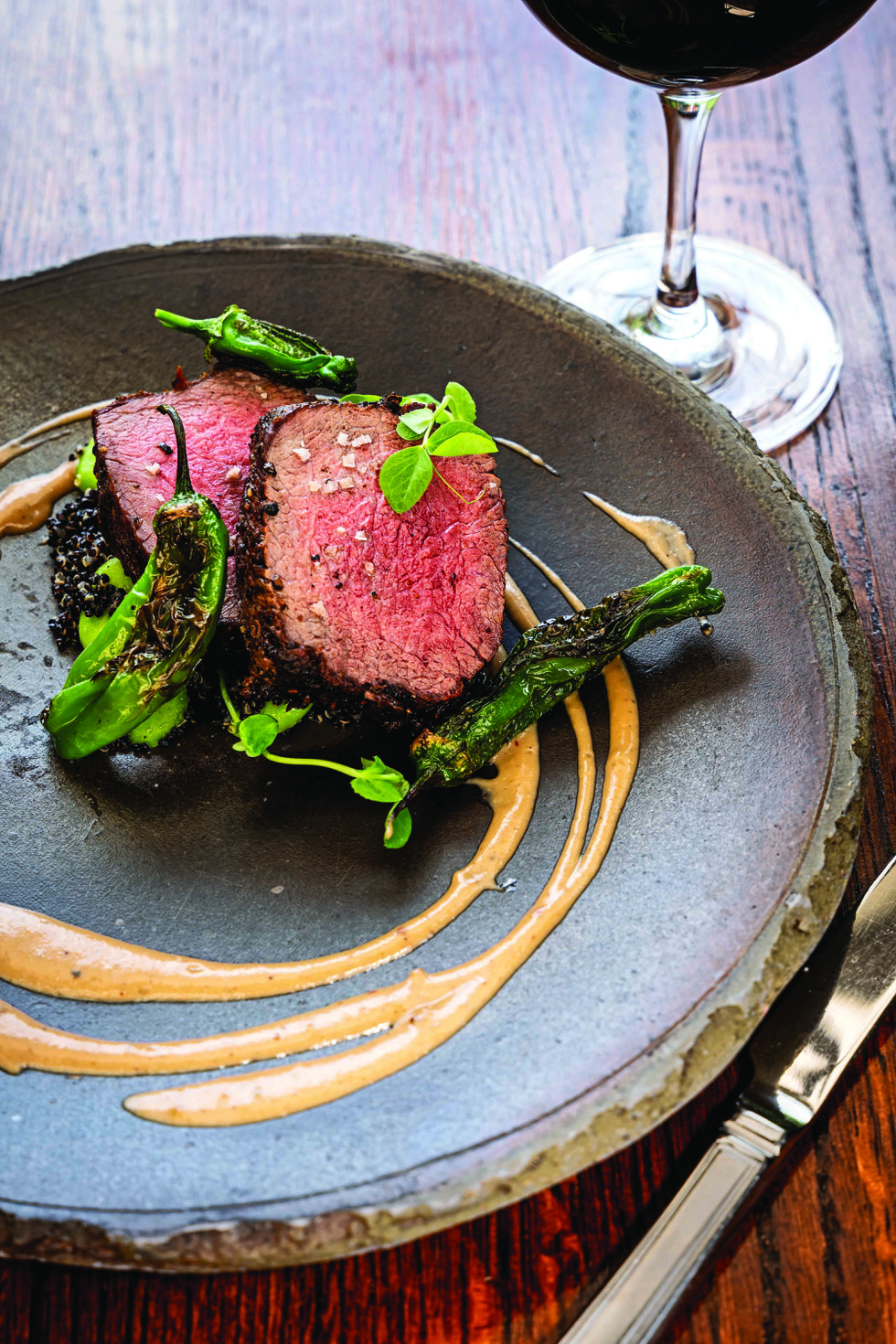
Waterford, VA
The Whiffletree Striploin with shishito peppers
For a quick bite, Vino9market in Paeonian Springs offers sandwiches and barbecue, but the butter chicken and other Indian dishes are the real stars here.
For fine dining, reserve a table at the Restaurant at Patowmack Farm in Lovettsville, which offers views of the Potomac from an elegant glass greenhouse. The menu features certified organic food sourced onsite and impeccable service.
Market Table Bistro in Lovettsville is a go-to local favorite and its impressive chef’s offerings and libations are created using locally-sourced products.
Where to Drink:
Loudoun County has so many wineries, breweries, distilleries, and tasting rooms that it’s hard to know where to begin. If you have time for only one, try relative newcomer Carriage House Wineworks in Waterford, which earned six medals in the 2021 Virginia Governor’s Cup, including gold for its 2019 Petit Verdot. CHWinery.com

Waterford, VA
Wheatland Spring Farm Brewery
For local suds, Wheatland Spring Farm + Brewery is at the forefront of the “Land Beer” movement, blending self-harvested grains, hops, honey, herbs, and yeast from its 30-acre property with crystal-clear water from its own aquifer to produce an incredible pint of beer—and why not stay overnight at its circa 1832 Cottage B&B while there? WheatlandSpring.com
Flying Ace Distillery and Brewery in Lovettsville was an instant hit when it opened earlier this year, with its aviation-themed decor, live music, food, and seating for 250. Situated inside former dairy barns on a 200-year-old working farm. FlyingAceFarm.com
Village Winery and Orchard in Waterford still serves apple, elderberry. and aronia libations, but don’t miss its new Honeyberry (Haskap) pure juice, new to North America. Owner Kent Marrs says his Honeyberry bushes, grown and marketed under their ORAC Farms brand, produce fruit that contains five times the antioxidant content of commercial blueberries. VillageWineryandVineyards.com
This article originally appeared in the October 2021 issue.
Photography by Scott Suchman www.suchmanphoto.com (sidebar photos by Waterford Foundation)
